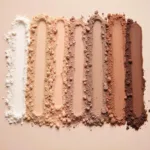As a passionate bird enthusiast, you’ve probably spent time curating the perfect backyard oasis to attract our feathered friends. You’ve carefully chosen feeders, provided fresh water sources, and even planted native species to create a welcoming habitat. But have you considered the role color plays in attracting birds to your feeders?
Birds, with their exceptional vision, are highly sensitive to colors. Understanding which colors capture their attention can significantly enhance your bird-feeding experience. While birds have diverse preferences based on species and geographical location, some colors have proven universally appealing.
The Science Behind Bird Vision and Color
Birds see a broader spectrum of colors than humans. They possess four types of color receptors in their eyes, compared to our three, enabling them to perceive ultraviolet light, a wavelength invisible to the human eye. This difference in vision means birds see colors with greater intensity and variation than we do.
Red: A Beacon of Nutrition and Sweetness
Red holds a powerful allure for many bird species, particularly hummingbirds. In the avian world, red is often associated with ripe fruits and berries, signaling a rich source of energy and nutrients. Hummingbirds, with their high metabolism and need for sugary nectar, are instinctively drawn to this vibrant hue.
Yellow: A Symbol of Joy and Insects
Like red, yellow signals a plentiful food source to birds. Yellow is often associated with seeds, grains, and insects, staples in the diet of many seed-eating birds like goldfinches and chickadees.
Orange: A Blend of Energy and Warmth
Combining the vibrancy of red and the cheerfulness of yellow, orange represents a balanced source of nutrition for birds. This color attracts a variety of species, including orioles, tanagers, and grosbeaks.
Blue and Purple: A Touch of Natural Beauty
While not as universally attractive as red or yellow, blue and purple hold a special appeal for certain bird species. These colors are often found in berries and fruits, particularly in the later summer months. Bluebirds, for example, are particularly drawn to shades of blue.
Colors to Avoid
While bright colors attract birds, certain colors can have the opposite effect. Avoid using white, which can signal danger or alarm in the avian world. Similarly, dark colors, like brown and black, might be perceived as a threat, resembling predators.
Creating a Colorful Bird Buffet
Now that you understand the language of color in the avian world, you can use this knowledge to create a vibrant and enticing bird-feeding station:
- Choose feeders in attractive colors: Opt for feeders in shades of red, yellow, orange, blue, and purple to attract a diverse range of birds.
- Add splashes of color around your feeders: Plant brightly colored flowers, hang colorful ribbons, or use bird-safe paint to add pops of color near your feeders.
- Consider your target species: Research the color preferences of the specific bird species you want to attract.
Conclusion
Attracting birds to your feeders goes beyond providing food and water. By incorporating colors that appeal to their natural instincts and preferences, you can create a welcoming haven for your feathered friends, transforming your backyard into a symphony of color and birdsong. Remember, observing birds in their natural habitat is a rewarding experience. By understanding their needs and preferences, we can ensure their well-being while enjoying their vibrant presence in our lives.
Are you ready to paint your backyard with colors that will make birds flock to your feeders? Contact Color Box Hanoi at 0373298888 or email us at [email protected]. Our team of color experts is ready to help you create a bird-friendly paradise! We’re located at 86 Cầu Giấy, Hà Nội, and offer 24/7 customer support.
